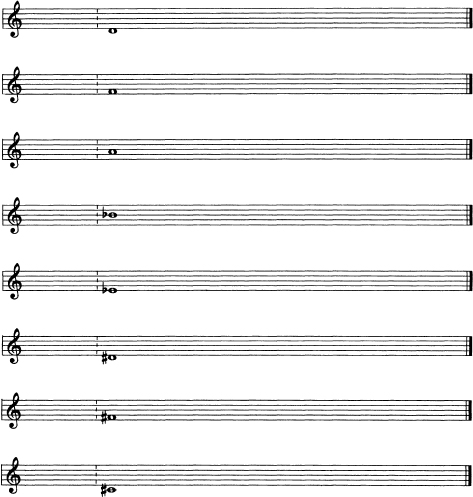
The following workbook pages give the student an opportunity to practice writing and constructing musical concepts. The exercises reinforce the important principles of musical composition that were addressed in part 1. In order that the student can submit them to the instructor, these pages may be photocopied.
Given the starting notes below, construct the major scales. Do not provide key signatures, rather, include the appropriate accidentals next to the notes on the staff.

Given the starting notes below, construct the minor scales as indicated. Be sure to include the ascending and descending version of the melodic minor scale. Do not provide key signatures, rather, include the appropriate accidentals next to the notes on the staff.
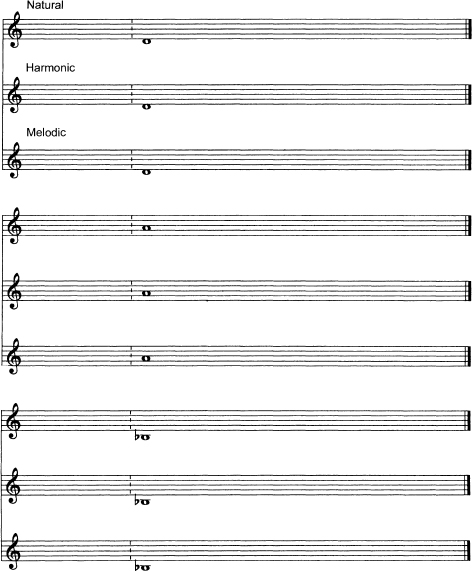
Write the interval name under each pair of notes.

Draw the indicated interval above and below each printed note.

Designate the enharmonic equivalents for the given notes.
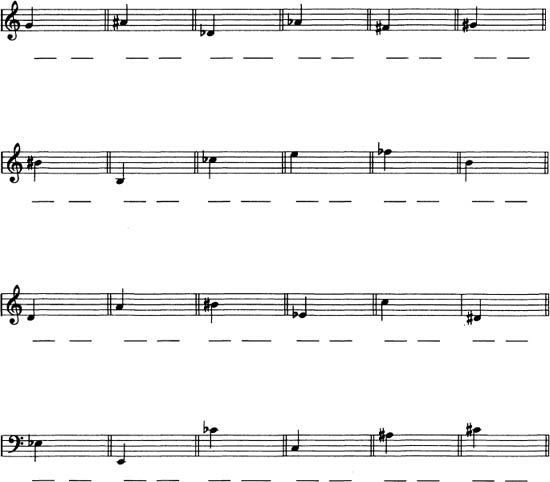
Reconstruct the Order of Sharps

Reconstruct the Order of Flats

Return to Workbook - Major Scales and Workbook - Minor Scales and now add the appropriate key signatures for the major and natural minor scales. (Do not add the key signatures for the harmonic or melodic minor scales.)
Provide the key signatures for the following keys:

A flat Major

C sharp Major

C flat Major

C sharp minor

d minor

B Major
Designate the correct major and minor keys for the following key signatures:
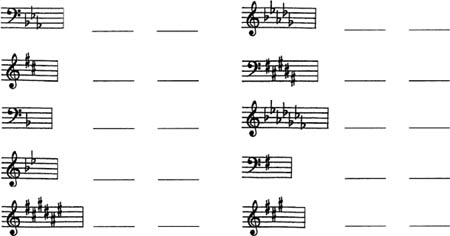
Build triads on the following major scales by simply adding the third and fifth above each root. Designate the mode of each triad on the line below.
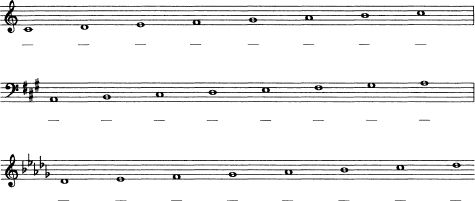
Build triads on the following minor scales by simply adding the third and fifth above each root. Designate the mode of each triad on the line below.
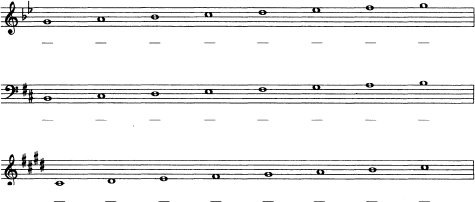
Draw a box around the major chords and circle the minor chords.

Add the appropriate accidental to the third of each traid to make it match the chord name.

Fill in the third and fifth above each root to build a major triad. Provide appropriate accidentials.

Fill in the third and fifth above each root to build a minor triad. Provide appropriate accidentals.

Identify each chord and then label the cadences.
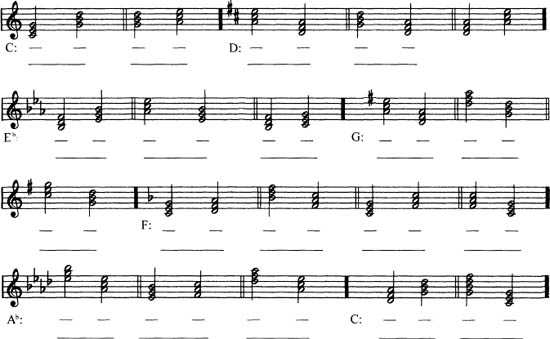
Write a Roman numeral under each chord in the following D Major progression.

Now transpose the chord progression above to the key of B-flat Major. Identify each chord. The first measure is complete. (Note clef change.)

On the staves below, construct four harmonic progressions that capture different emotional sensibilities.
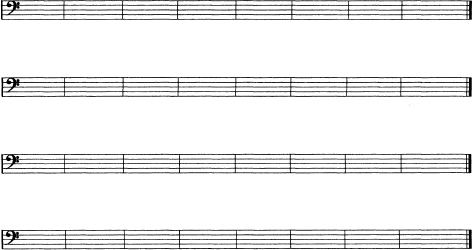
On the staff system below, construct an harmonic progression and provide an entirely harmonic melody. Then replicate that harmonic progression on the second staff system and, still using the framework of your harmonic melody, add non-harmonic tones to expand the compositional interest.
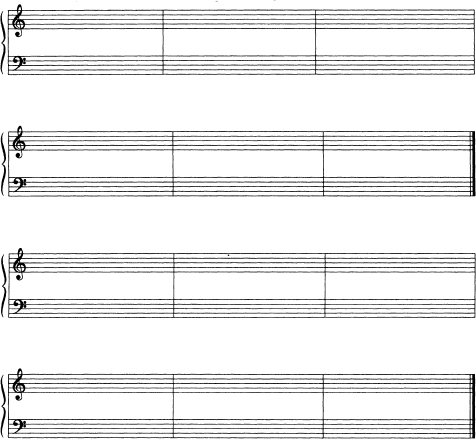
In the measures below, create a rhythm etude which includes at least four different time sig and all notes and rests up to the 32nd.